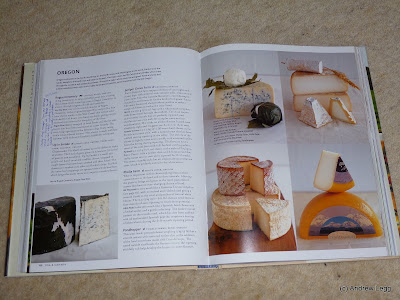I won't write much about Whitestone cheese, as there is plenty of information available on their website (www.whitestonecheese.com), and many people are familiar with their brand, being one of the largest artisan cheese producers in New Zealand. Their Windsor Blue has won countless medals at the NZ Champions of Cheese Awards over the years - including Supreme Champion in 2006. So it has a strong pedigree.
Unfortunately the sample I had purchased was probably not up to the high award winning standard usually expected, but it was still a nice cheese. The appearance was good, a nice rind and good blue veins throughout the paste. It had a very creamy texture in my mouth. There were parts of the cheese that had not ripened that much - these had a bitterness at first and a very slight petroleum taste. To be fair though, many people may not even notice these slight flavours - they are something I pick up from regular tasting and judging of cheeses. These would probably disappear as the cheese matured more and developed stronger flavours from more proteolysis and lipolysis. Other parts of the cheese with more blueing had a nice earthy stronger flavour. Personally I would have preferred some more age on the cheese - but then I do love a really strong blue, which is not to everyone's taste.
When considering the individual sample I tasted, we should remember the variability that must be expected with artisan cheeses. The same cheese can vary from batch to batch, round to round, and even within a cheese itself. So a cheese selected from a good batch is not guaranteed to be as stunning as others in that batch. This is no reflection on the cheese maker or cheesemonger. We should be more concerned about the quality and consistency of the cheese over time rather than small variations between batches. And Windsor Blue certainly has shown to be consistently good. And I would certainly prefer to buy my cheese cut fresh from a round at a good cheese shop, rather than sealed in plastic at the supermarket.
 |
| Windsor Blue - I've already cut the best part off for my lunch! |
 |
| Windsor Blue went well in my road trip picnic at Hanmer Springs. |

